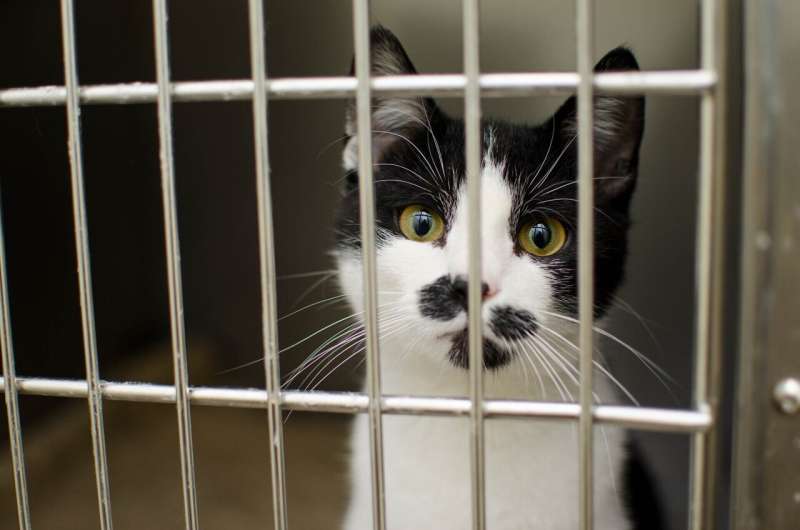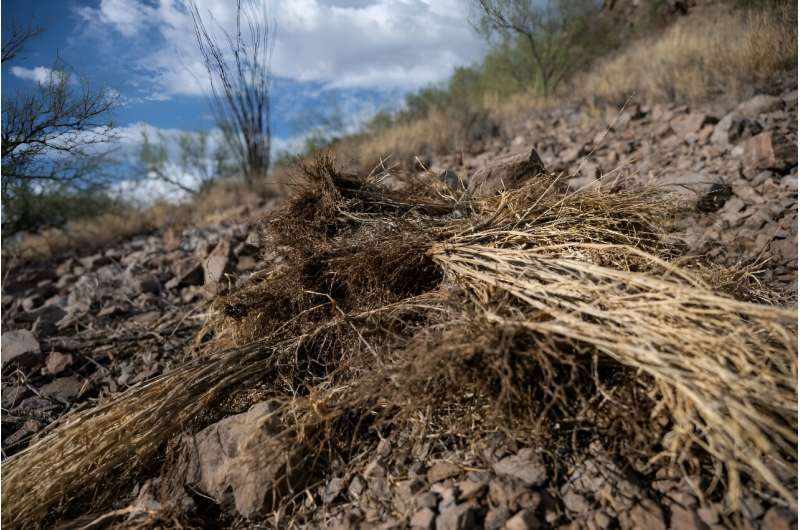Creating a disaster preparedness plan for your pets

Recently, Texas Gov. Greg Abbott announced a wildfire disaster declaration for about 75% of the state's counties and the National Oceanic and Atmospheric Administration also released an updated hurricane season outlook that includes a 70% chance of 14-21 named storms before the season ends in November.
With these potential weather threats in mind, now is a good time to consider what you might do with your pets if there was an emergency.
Having a plan in place is crucial for the furry members of your family. The most important way for owners to prepare for a disaster evacuation is to plan ahead and pack a go-kit, an easy-to-grab, waterproof bag or container with basic survival items and supplies.
Planning ahead
The first step in planning ahead is to know where you are going in the event of a possible evacuation by compiling a list of hotels, boarding facilities, and shelters that allow pets.
"This helps you know where you can go, depending on the types of animals you have and how many, and can give you a leg up on calling them quickly when you know you will be evacuating and need a reservation," said Dr. Deb Zoran, a professor at the Texas A&M School of Veterinary Medicine and Biomedical Sciences.
"Before you need them, be sure you have information on the hotel, shelter or boarding facilities you may use when a disaster is headed your way, check that they have a good reputation for their animal care, and make sure the facilities are completely out of harm's way."
While gathering information, owners can also confirm if the facilities require specific vaccinations.
"The only vaccine that is required by law in most places is rabies, yet even that vaccine is not always required for entry into an emergency animal shelter," Zoran said. "A majority of animals brought to a shelter after being rescued from a flood, fire or tornado come without their owners—or their owners come with them but without documentation. Emergency shelters have to operate on this premise."
To ensure there is no doubt about a pet's vaccination status, owners should keep records of vaccinations that evacuation shelters may require evidence of, including:
- Rabies
- DA2PP, a single vaccination for distemper, adenovirus type 2, parvovirus, and parainfluenza
- kennel cough for dogs
- FVRCP, or feline viral rhinotracheitis, calicivirus and panleukopenia
"Most shelters allow non-vaccinated animals into the shelter but separate the animals with vaccination papers from those without," Zoran continued. "Ultimately, you need to consult with your vet about appropriate vaccines for your dog or cat."
Assembling a go-kit
Owners should ask their veterinarian annually for copies of vaccine records and medication details to print and include with their go-kit.
"If your pet needs medications—heartworm, flea prevention, or specific medication for health conditions such as thyroid or heart medicine, antibiotics, etc.—you need a copy of the medical records showing that your pet requires this medication should you not have enough or the medication is lost and has to be refilled," Zoran explained. "Pet medications cannot be given to you without documentation or a new vet exam, so having records available is important."
A go-kit should also include first aid supplies; cleaning supplies, including pet waste bags and sanitizing wipes; and feline supplies, if applicable, such as a litter box, scooper and litter.
Zoran suggests owners pack additional items that can help keep pets safe and comfortable while traveling and throughout their stay in an unfamiliar place.
"Disasters are a stressful time for pets, so bringing things that smell familiar, special treats, normal food, and toys is very important," Zoran said. "Cats, in particular, not only need the kennel that they travel in, but if they are going to be away from home for days or weeks, they will need a kennel at least 2 feet by 3 feet or larger to live in; they need room to sleep, a box to hide in and a place for the litter tray."
Normal foods that pets are accustomed to contribute to keeping pets healthy during difficult situations.
"Familiar foods and water sources will help prevent gastrointestinal upset, as sudden food changes in the shelter environment can lead to loss of appetite, vomiting or diarrhea, adding to the stress of the moment," Zoran said. "Cats will be less willing to eat in a stressful or busy environment if they don't have their own food and if they don't have a quiet place or time to eat."
Disaster evacuations can create stressful environments for people and pets alike, but adding identification tools and transportation supplies into a go-kit can help prevent pets' needs from being overlooked in the chaos.
"Both dogs and cats need to have microchips, collars or harnesses for identity protection and escape prevention," Zoran explained. "Cats should not be removed from kennels without a harness on, as fear-inducing experiences can cause them to run and hide. Dogs, even the most highly trained ones, will also flee, so careful use of collars and leashes is essential, both for their protection and for preventing interactions with other animals at the emergency shelter."
More information: Pet owners should familiarize themselves with additional preparation tips by Texas A&M University's Veterinary Emergency Team to establish a plan, ahead of an emergency situation.
Provided by Texas A&M University Know the requirements for your pet's rabies vaccination








